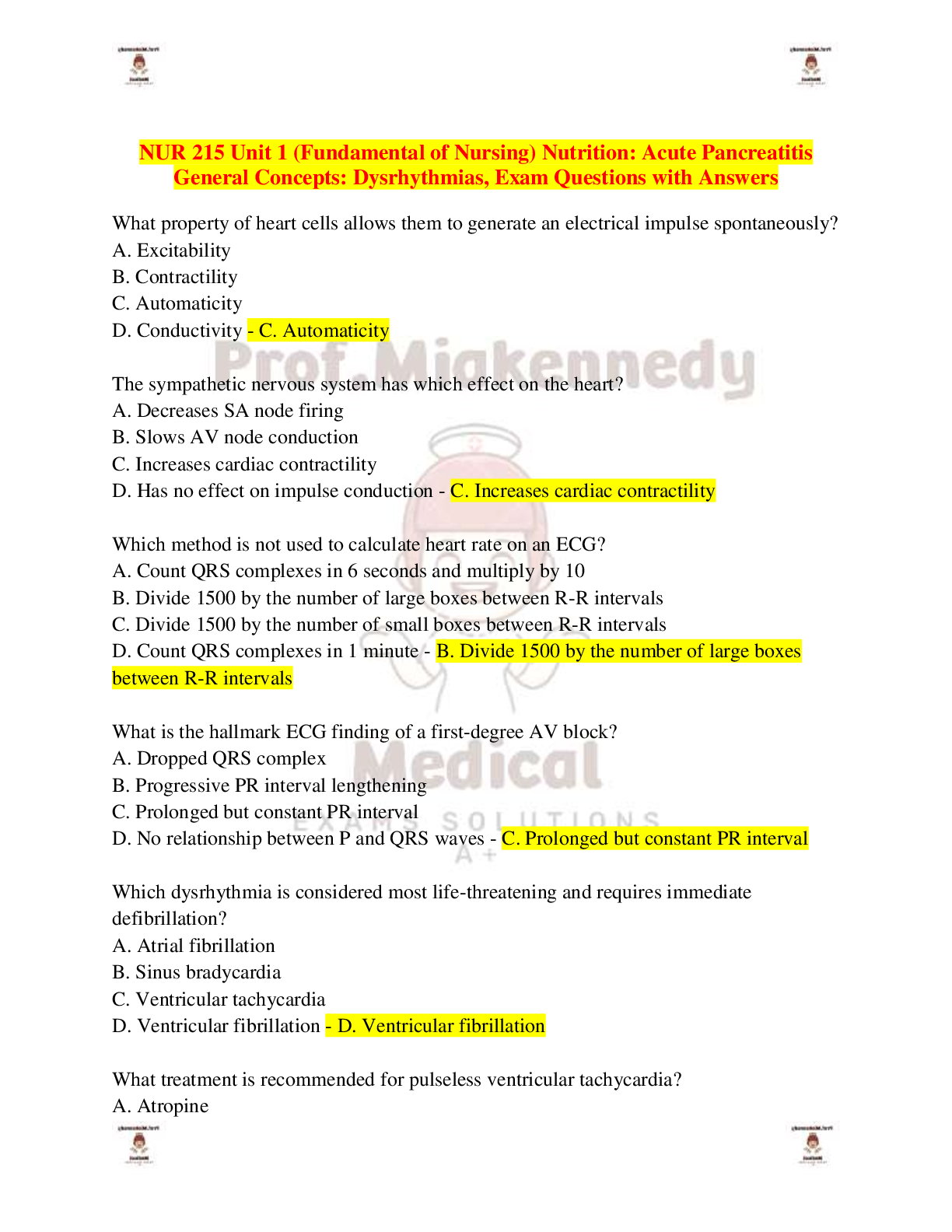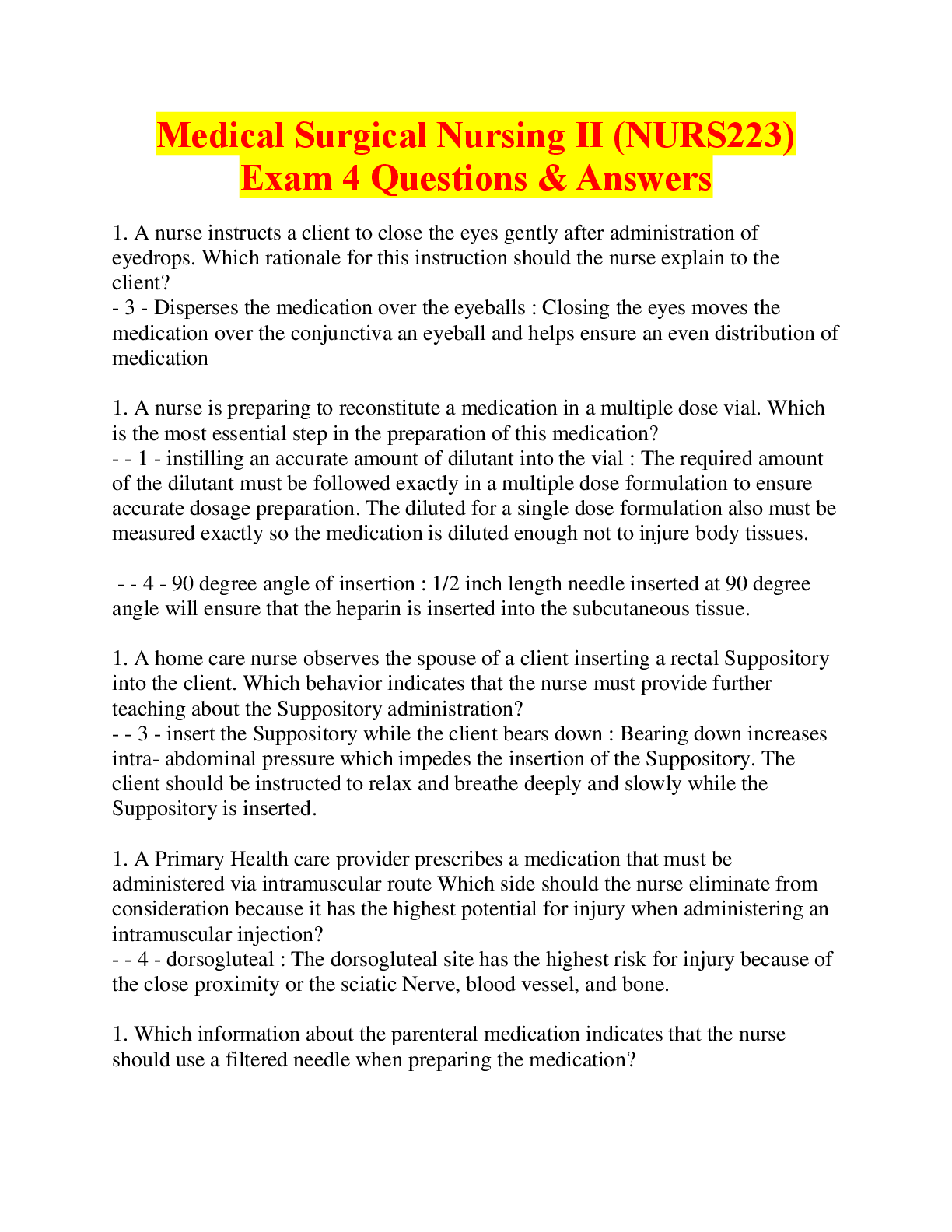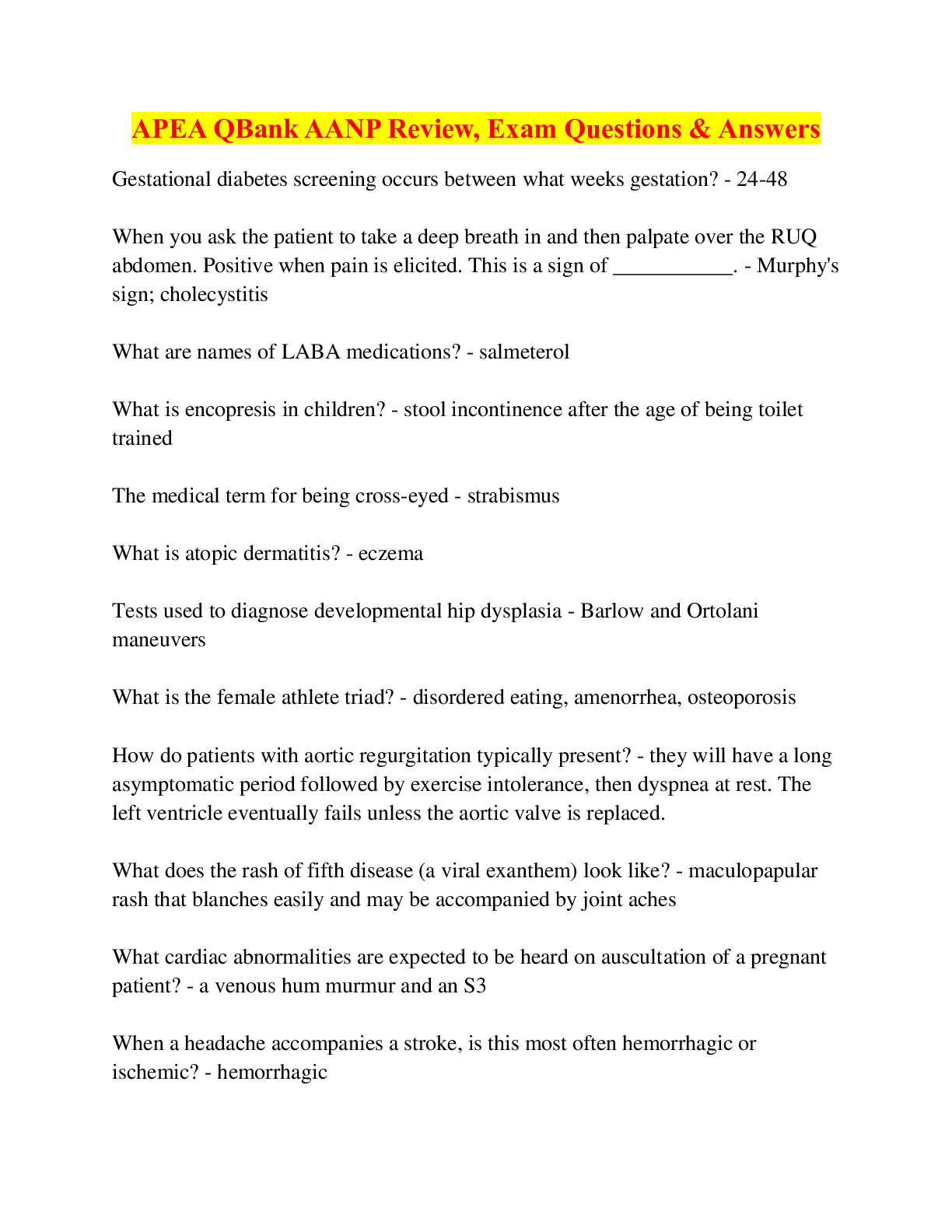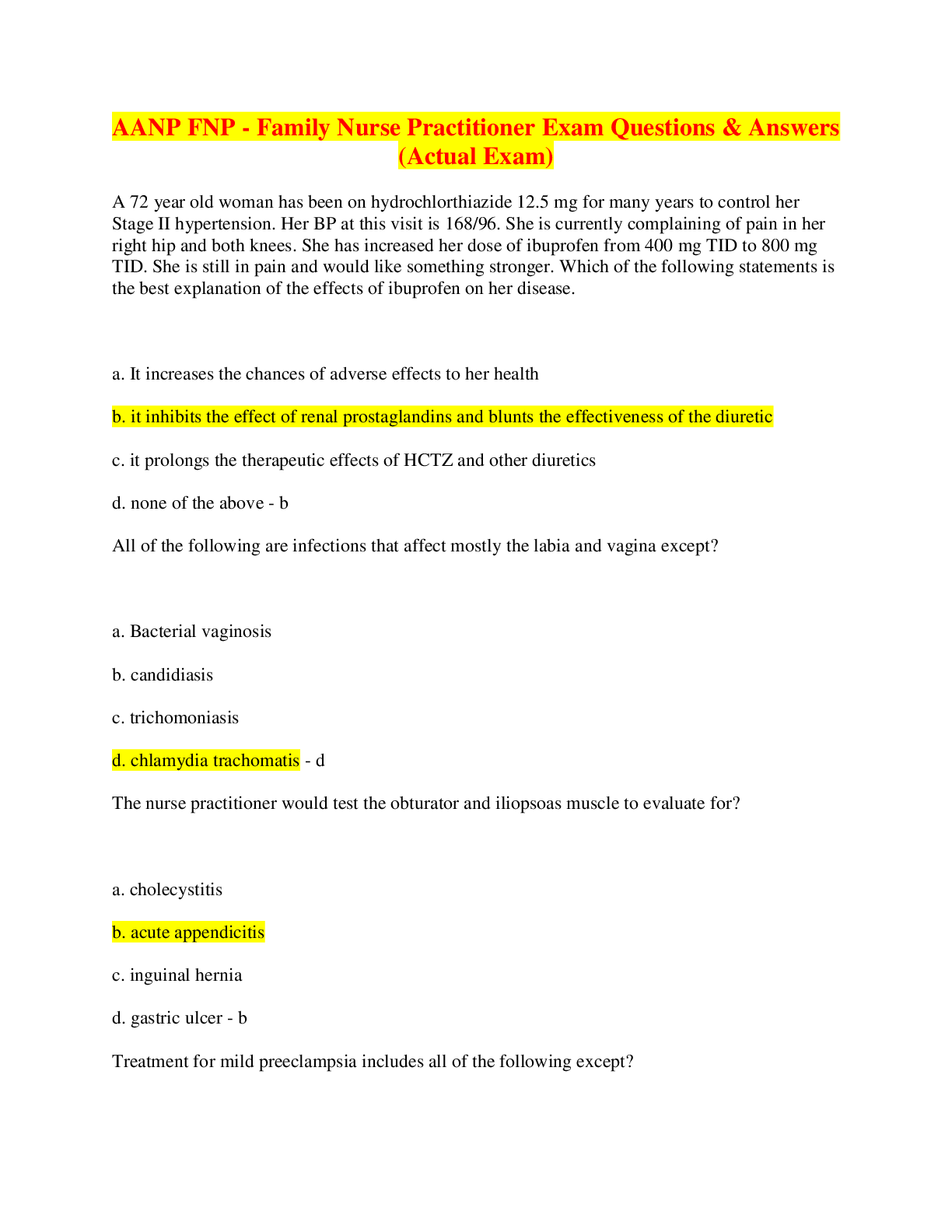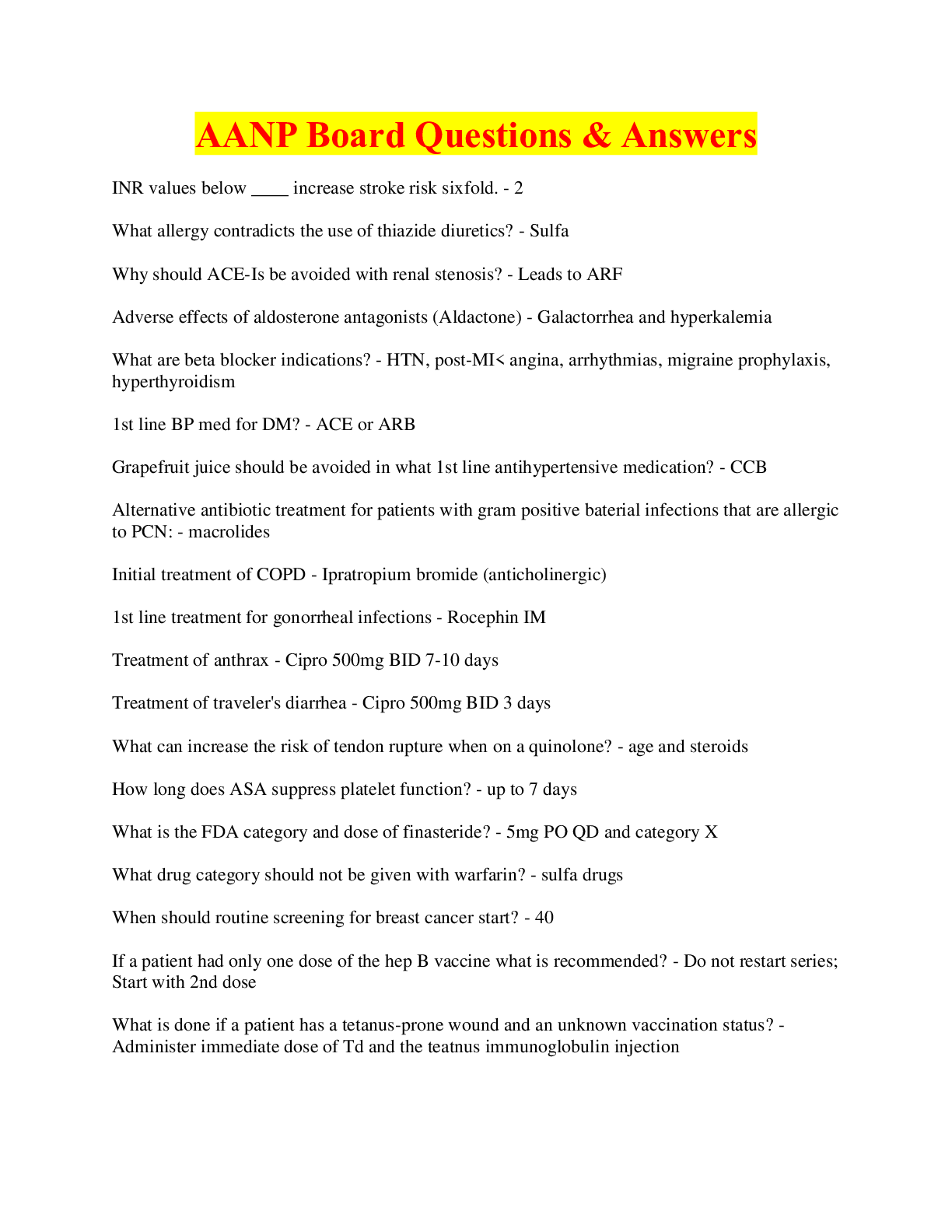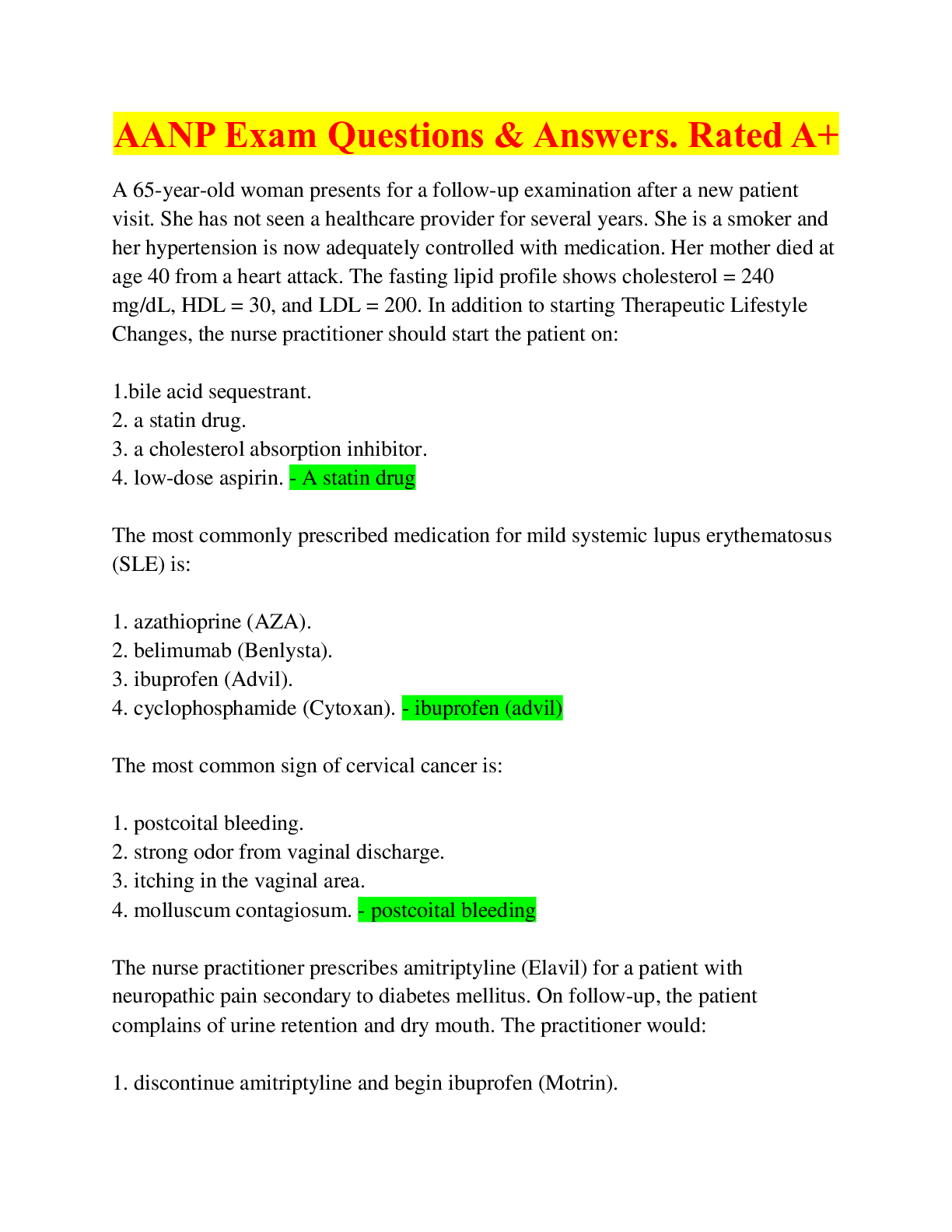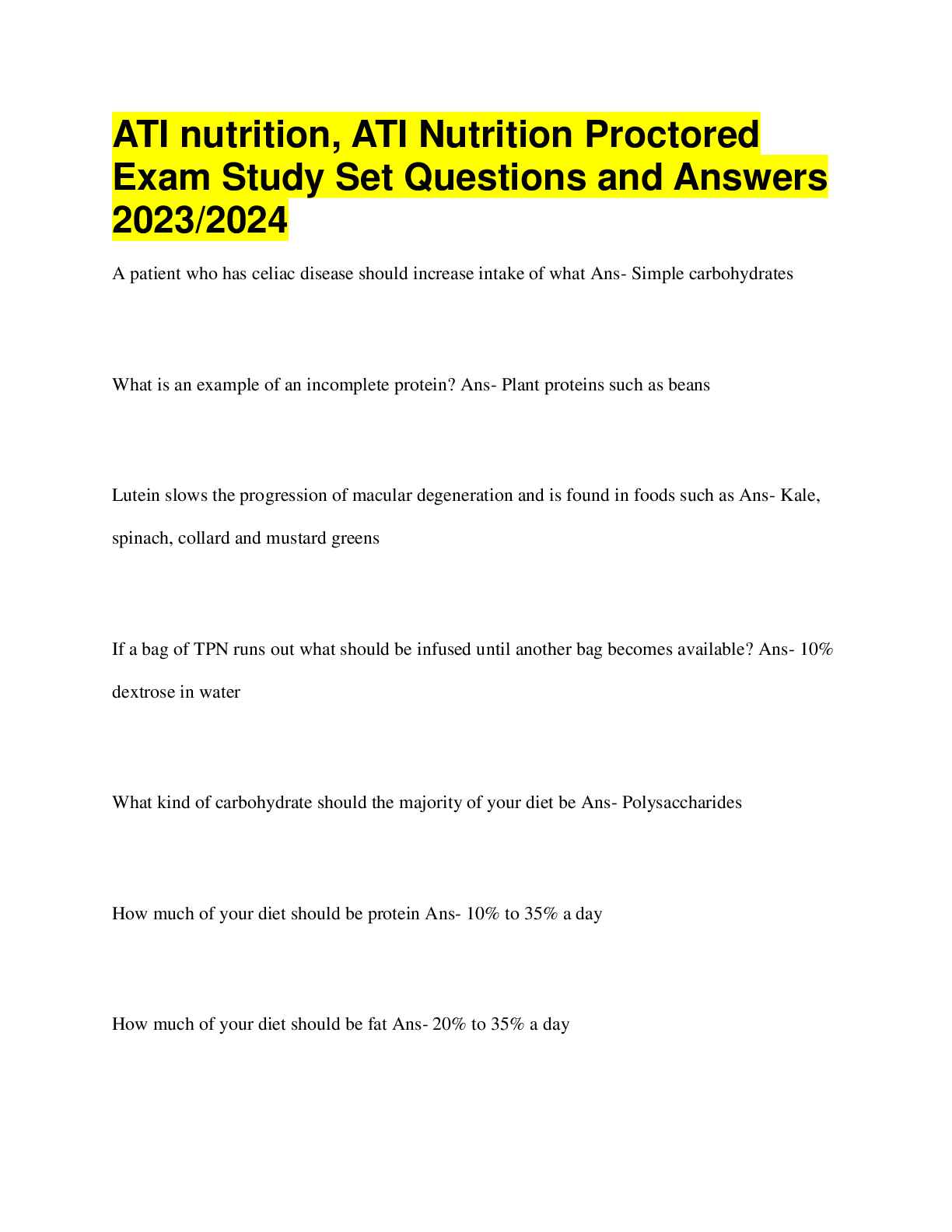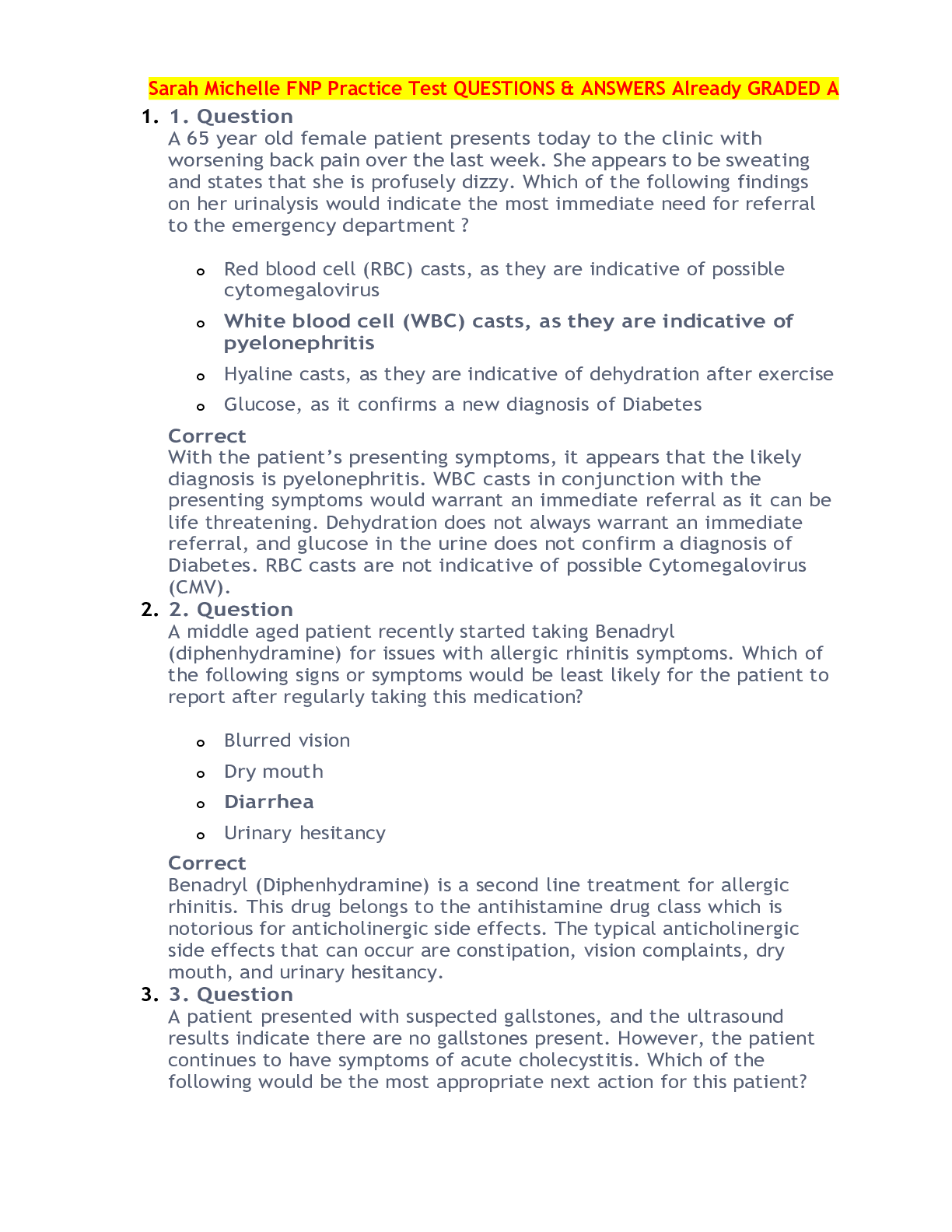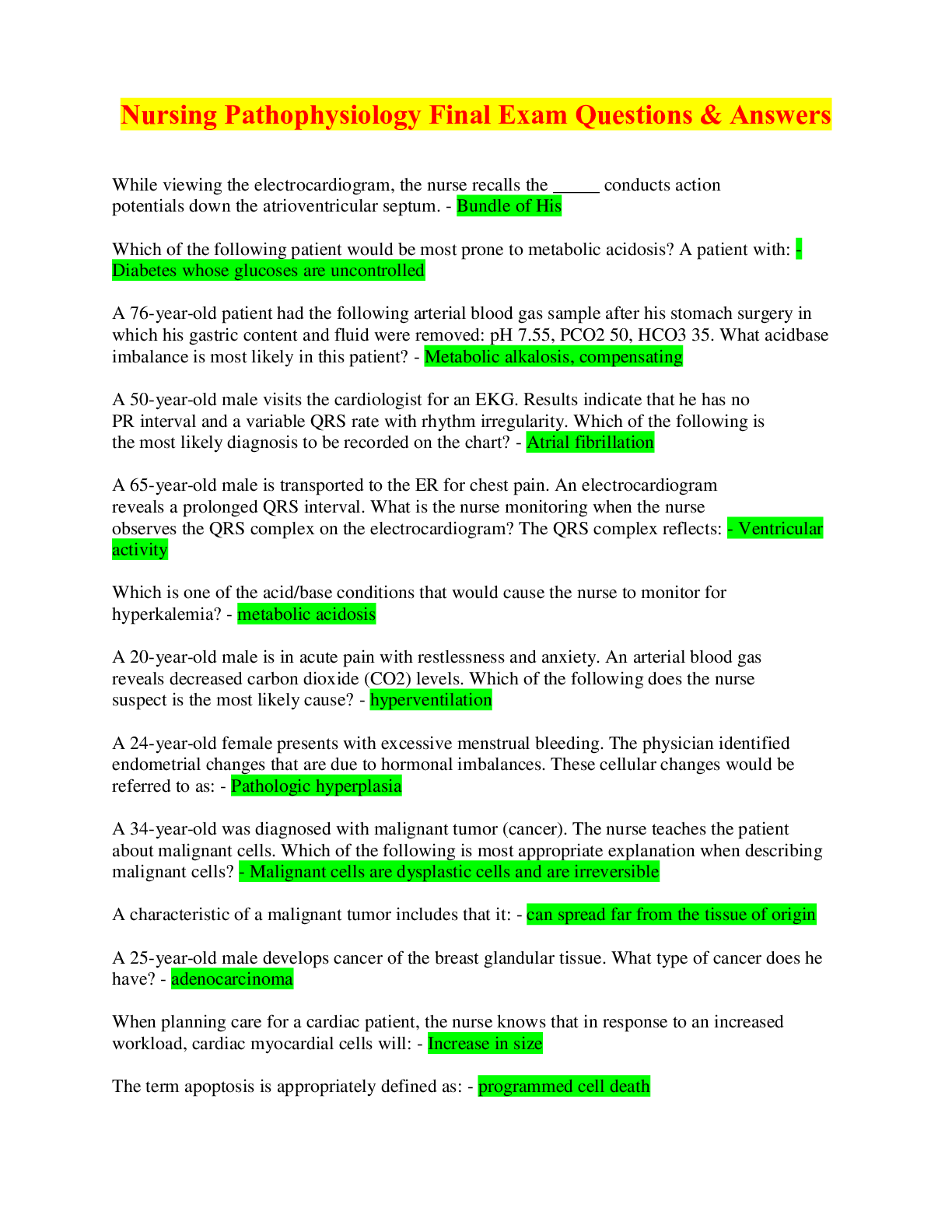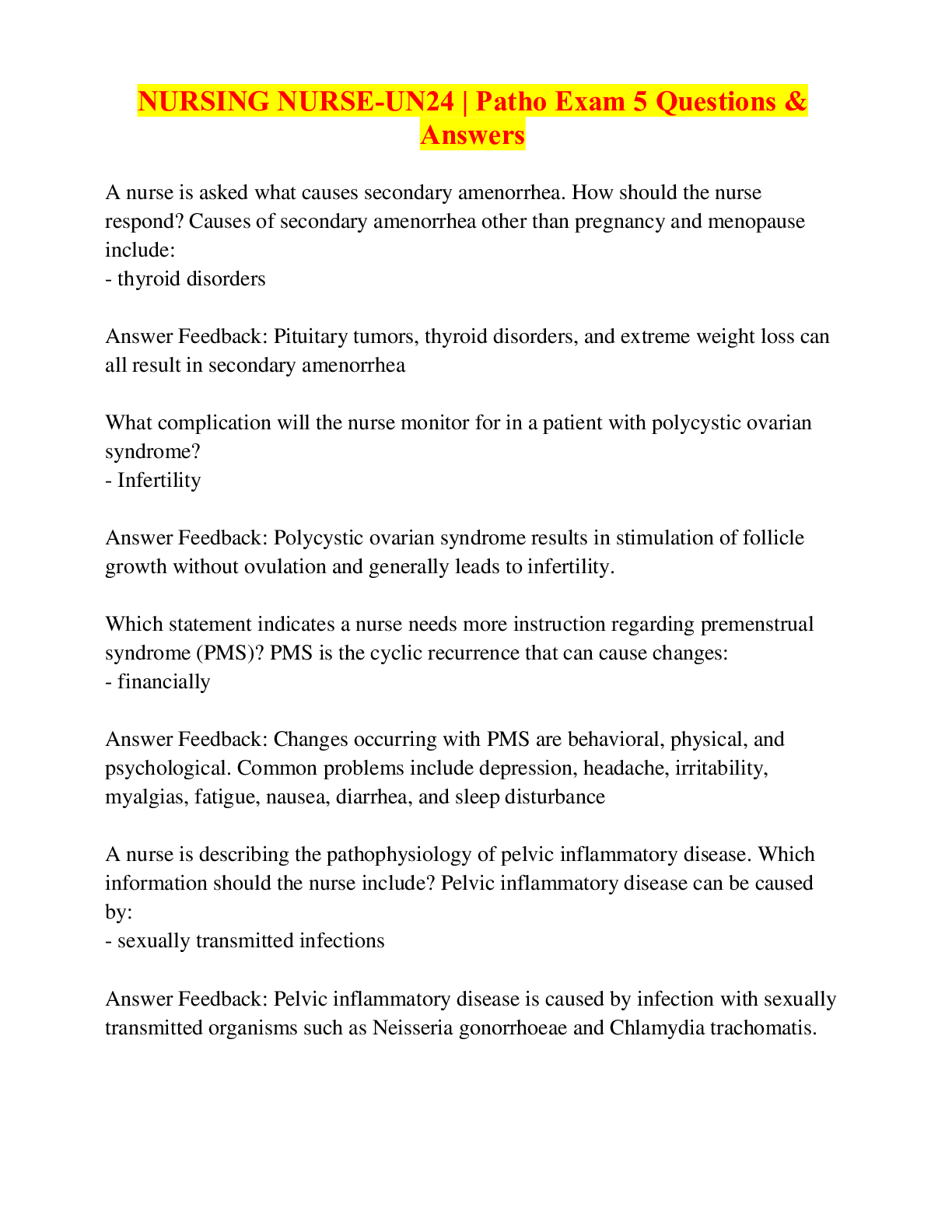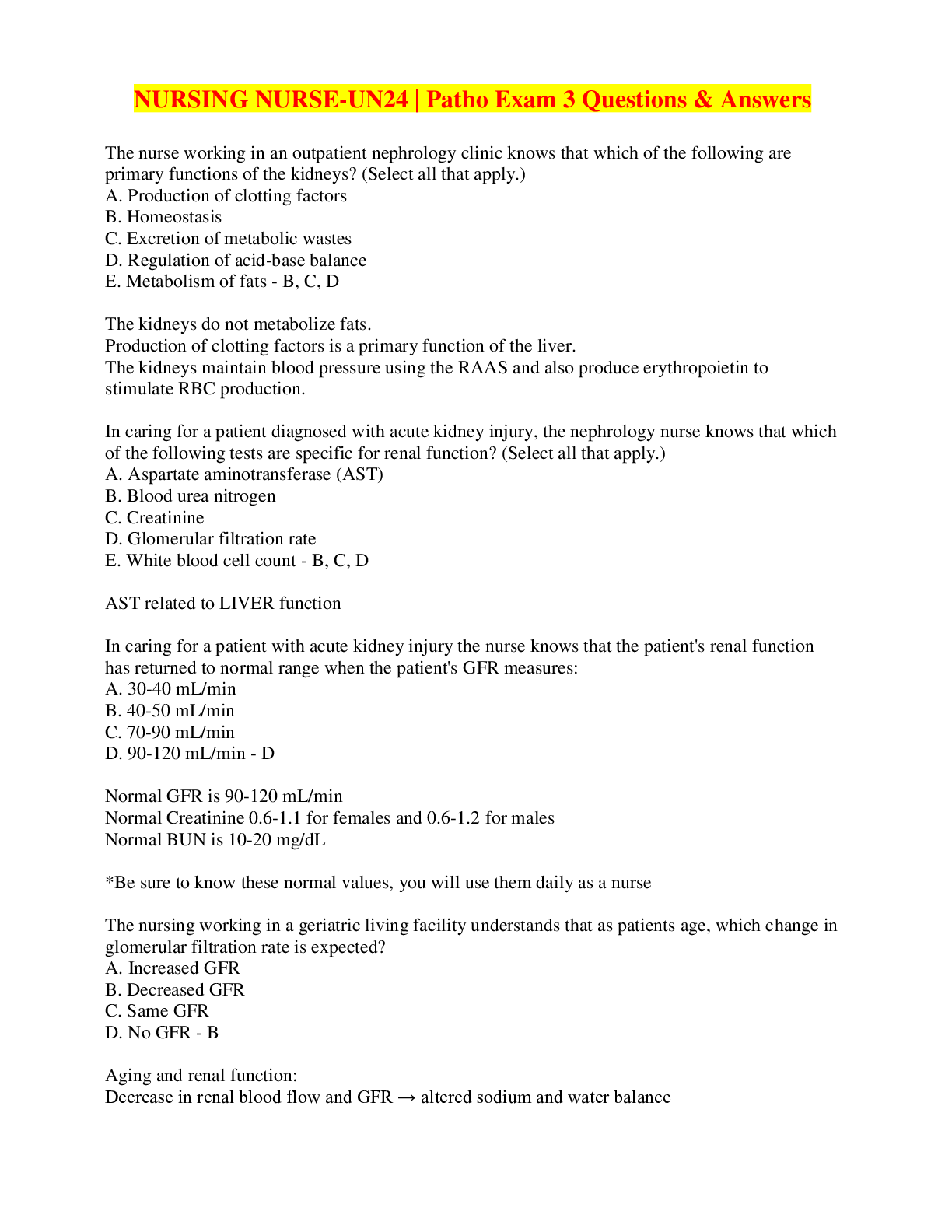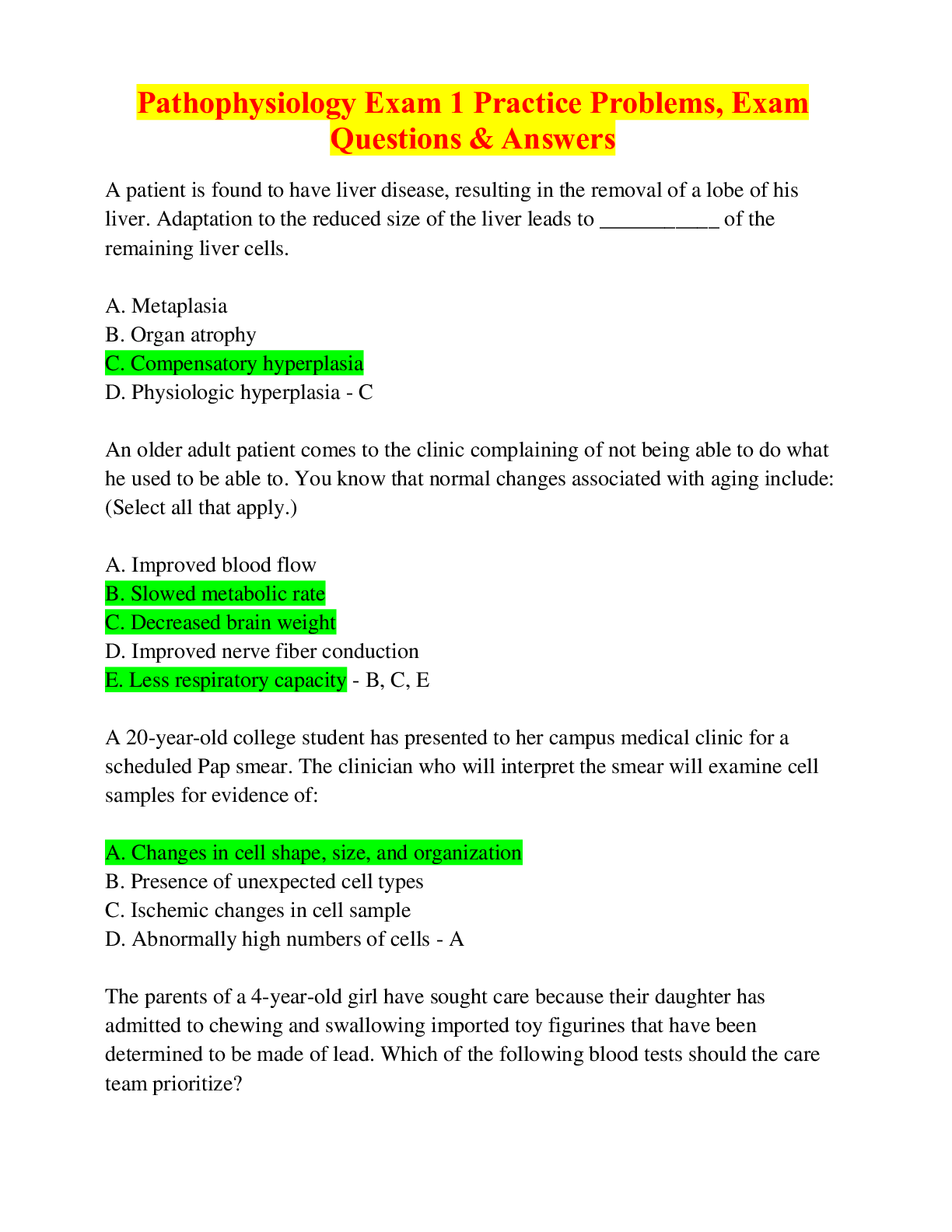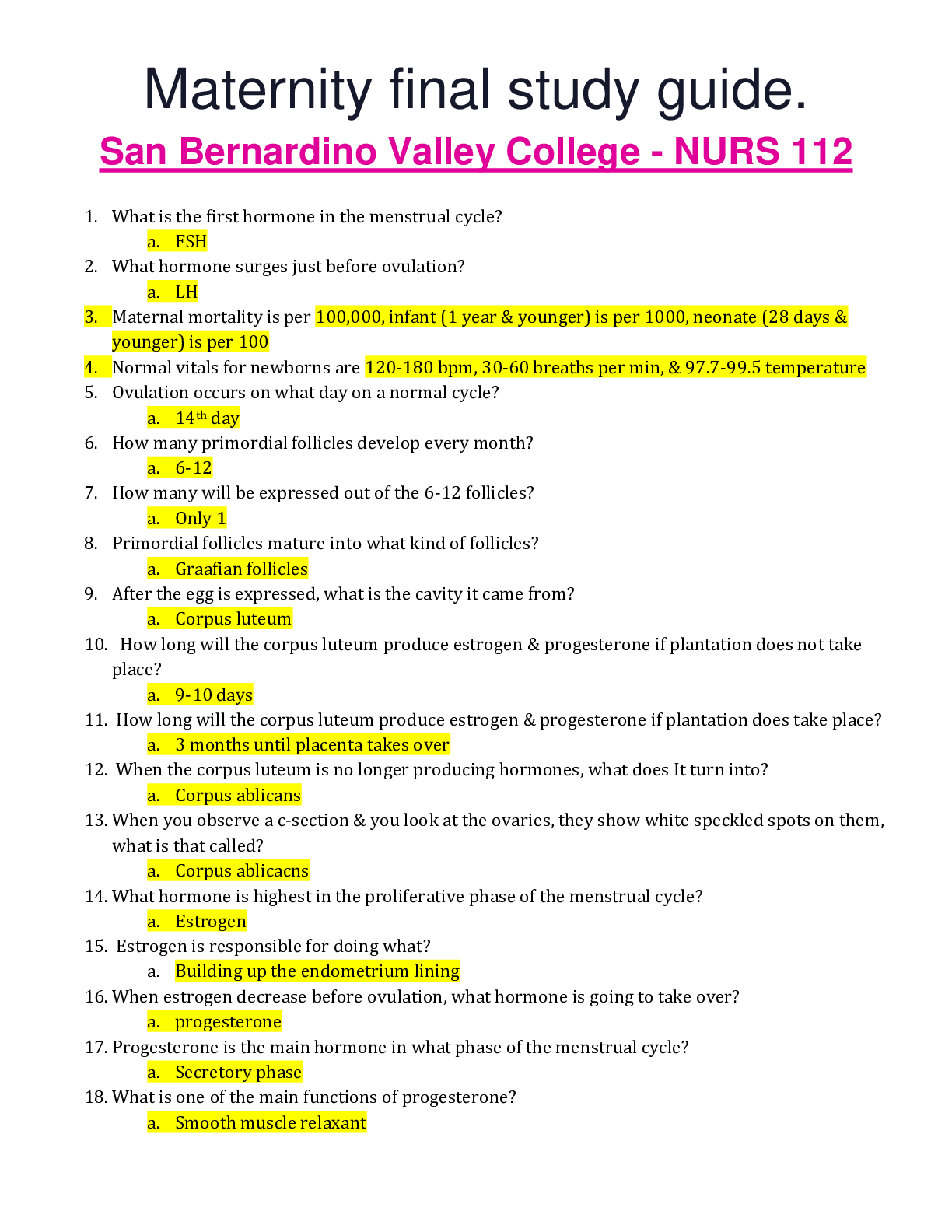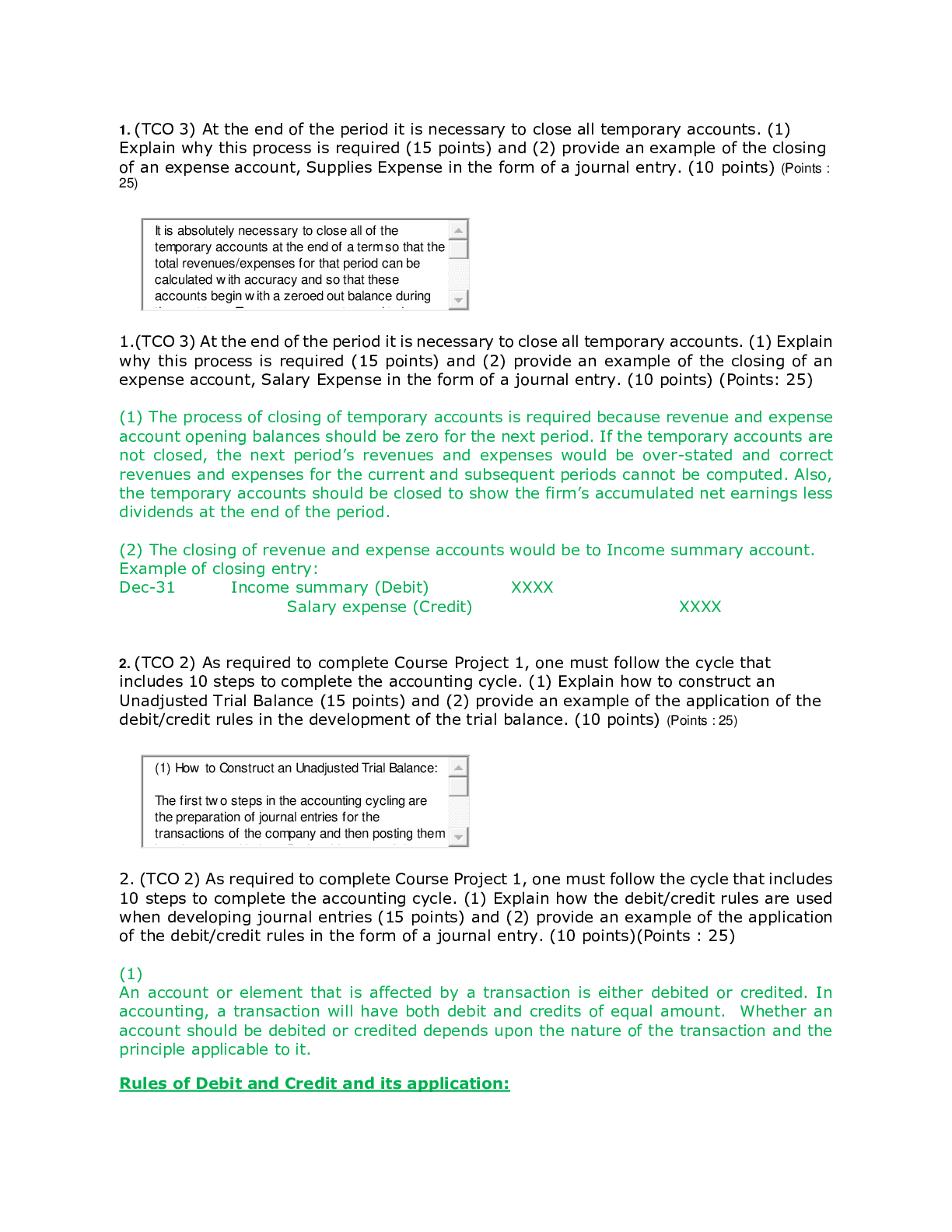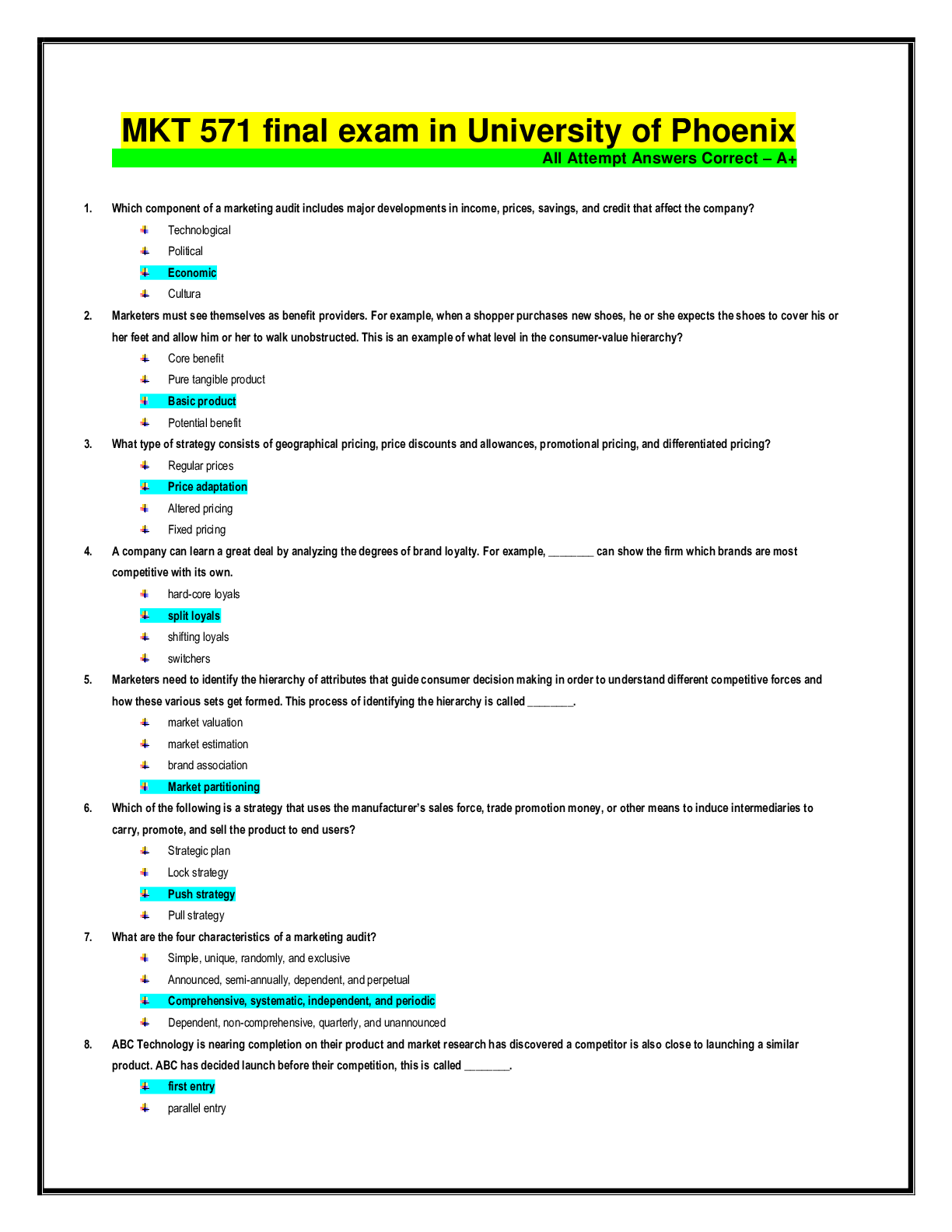NUR 215 (Fundamentals of Nursing) Test 4 Exam Questions & Answers
Document Content and Description Below
NUR 215 (Fundamentals of Nursing) Test 4 Exam Questions & Answers-A patient was admitted to a rehabilitation unit for treatment of a spinal cord injury. The admittng diagnosis is central cord syndrome... . The nurse expects to find which of the following during the physical assessment? A. Loss of motor power, pain and temperature sensation below the level of lesion B. Preservation of a sense of touch below the level of lesion C. Loss of motor power and sensation in the upper extremities D. Loss of sensation of pain and temperature on the opposite side of the injury-C. Loss of motor power and sensation in the upper extremities The nurse is admitting a patient who has a neck fracture at the C6 level to the intensive care unit. Which finding on the nursing assessment is congruent with neurogenic shock? SATA A. A lack of sensation or movement below the injury B. Involuntary and spastic movement C. Bradycardia D. Hyperactive reflexes below the injury E. Hypotension and warm extremities -C. Bradycardia E. Hypotension and warm extremities Rationale: Neurogenic shock is characterized by hypotension, bradycardia, and vasodilation leading to warm skin temperature. Spasticity and hyperactive reflexes do not occur at this stage of spinal cord injury. Lack of movement and sensation indicate spinal cord injury but not neurogenic shock. Which Collaborative and nursing actions should the nurse include in the plan of care for a patient who experienced a T2 spinal cord transection 24 hours ago? SATA A. Continuous cardiac monitoring B. Urinary catheter care C. Administration of H2 receptor blockers D. Maintenance of a warm room temperature E. Nasogastric tube feeding -A. Continuous cardiac monitoring B. Urinary catheter care C. Administration of H2 receptor blockers D. Maintenance of a warm room temperature Rationale: The patient is at risk for bradycardia and poikilothermia caused by sympathetic nervous system dysfunction and should have continuous cardiac monitoring and maintenance of a relatively warm room temperature. To avoid bladder distention, a urinary retention catheter is used during this acute phase. Stress ulcers are a common complication but can be avoided through the use of the H2 receptor blockers. Gastrointestinal motility is decreased initially, and NG suctioning is indicated. [Show More]
Last updated: 3 weeks ago
Preview 1 out of 35 pages
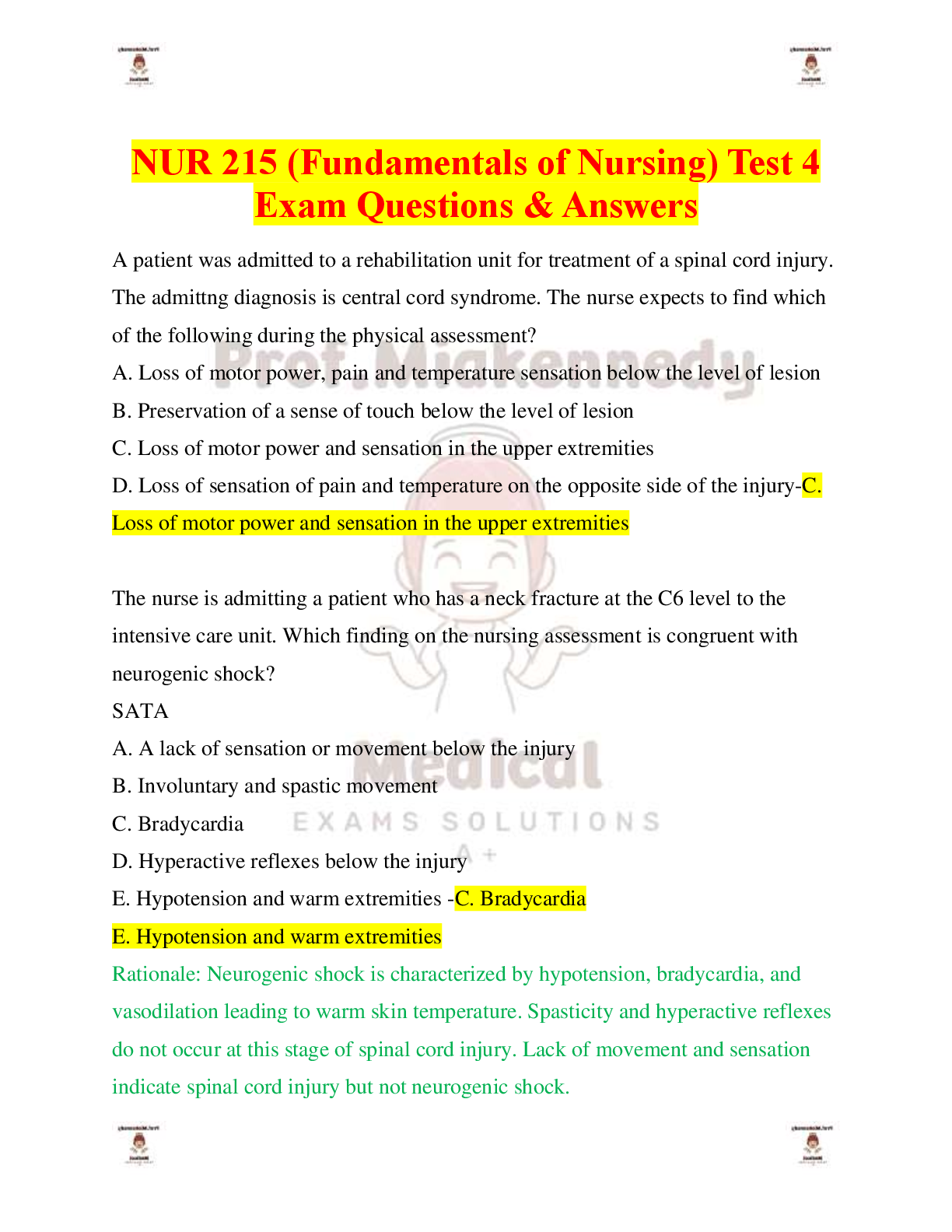
Buy this document to get the full access instantly
Instant Download Access after purchase
Buy NowInstant download
We Accept:

Reviews( 0 )
$15.50
Can't find what you want? Try our AI powered Search
Document information
Connected school, study & course
About the document
Uploaded On
Jul 15, 2025
Number of pages
35
Written in
Additional information
This document has been written for:
Uploaded
Jul 15, 2025
Downloads
0
Views
8
